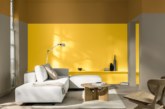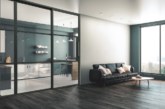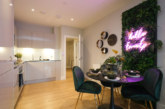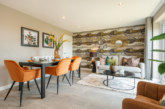Internal doors can have a particular impact on prospective buyers as they are amongst the limited number of items in a house with which buyers physically interact during a viewing. Ross Nisbet, Product Manager at Premdor, explains how the core of the door can make all the difference to the customer experience and examines some of the options available.
Choosing the right door for your project is usually determined by a few simple, yet vital questions. The first is aesthetic. Does the door suit the environment? Second, is the price right? Thirdly, and the most important, is the door appropriate for use?
No one wants to finish a project to discover that a decision as simple as choosing the right door has had a detrimental effect at the end of the job. The misleading concept that doors are chosen at the last minute to fill a hole, is one that is only ever ill advised.
The majority of the time it is the core itself that makes all the difference when establishing the purpose of your door. But with a number of differing cores, selecting the right one can be time consuming if you’re not quite sure what to look for – below is some help.
The right core for your door
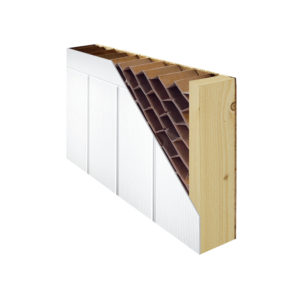
Standard Core (Hollowcore) The Standard core is the most cost effective option, but that doesn’t always translate as the best for the job. Suitable for domestic use, these are usually found within the interior doors of an everyday home. Popular with housebuilders, installation is reasonably straightforward. However, the light duty multi-cell or spacer pad core means that it is inefficient as a sound insulator and not resistant to fire. This type of core can be chosen throughout the majority of Premdor’s range, excluding Portfolio.
Semi Solid Core An advancement on the Standard Core, the Semi Solid offers additional weight giving a more robust feel to the internal door. With the addition of extended particle lock blocks, it is able to offer a higher level of security and a considered alternative to the Standard Core construction.

Safe ‘N’ Sound Core A Solid Core Construction, the Safe ‘N’ Sound is available throughout Premdor’s moulded collection. It comes in a standard thickness of 35mm imperial size and 40mm metric, and offers the very best of a non-fire door accredited specification, making a real difference in terms of sound reduction and the idealised sense of safety through its premium feel.
Solid Core The standard option throughout our Portfolio veneer range, Solid Core provides the extra benefits of added strength, durability and flexibility. When comparing with the Standard Core’s performance, choosing a Solid Core would offer improved sound reduction qualities
Fire doors
Where regulations are to be adhered to and peoples’ safety is concerned, fire doors can be tricky business. Whether your fire doors are framed or not, 44mm or 54mm – in all cases fire doors should only be installed by those who are competent and skilled in their profession to undertake the responsibility of fitting to the required standards.
Fireshield FD30 Tested to withstand 30 minutes of fire resistance with a thickness of 44mm, the FD30 core will only provide certified fire resistance when correctly installed with suitable intumescent strips, locks and hinges. Offering heightened acoustic and energy benefits (with the correct seals) as the Solid core, Fireshields are ideal for flat entrance doorsets, care homes, hospitals, schools and other commercial premises.
Firemaster FD60 The availability of the Firemaster allows for a longer lasting resistance if ever building regulations specify it. With all the benefits of the FD30, the FD60 is 54mm and tested to withstand 60 minutes of exposure to fire.
Framed vs Unframed Fire Doors Suited to commercial dwellings, the framed fire door core provides a well-rounded, sturdy feel. With improved screw retention into the core, hanging and adding ironmongery is that bit easier.
Regardless of whether the door is framed or unframed, the fire rating of the core; FD30 or FD60, is unchanged. However when concerning the trimming of edges, framed doors can only be trimmed up to 3mm on vertical edges and 5mm on the bottom. This is where unframed fire doors have their advantage as they can be trimmed 3mm on the vertical edges, but an unrestricted amount can be taken from the bottom – ideal for residential environments where the space requires a larger measurement to be trimmed.


